
The other day I was driving through my neighborhood and spotted a five foot tall potted fiddle-leaf fig tree sitting dejectedly in the front of a neighbor’s yard. They were giving it away for free. It was definitely alive, but had the all-too-familiar signs of a finicky ficus—browned leaves and drooping branches. The owners had clearly had enough.
I’ve been there.
I acquired my first fiddle back in its design heyday and spent hours Googling care tips, obsessing over every fallen leaf, and turning it every which way for optimum sun exposure.
There were days where I’d look over at my fiddle and say (softly, so it couldn’t hear me), “I totally get why people buy fakes!”
I’ve come a long way in my indoor plant journey. I now have four fiddles to my name and so far I’ve been able to keep them alive. But these days, I’ve felt drawn to leafier varieties of indoor trees. I find they bring a certain lushness to an interior scene, and today I’m sharing a few of my favorites that don’t require the same level of care (ahem, OBSESSION) as the sometimes fussy fiddle-leaf tree.
https://www.instagram.com/p/B7bvJYvHWKK/A word of caution before I dive in: don’t let yourself be fooled by #InstagramReality! Designers are notorious for bringing in outdoor trees to ‘get the shot’, and the majority of the time the tree used in the shoot won’t actually survive indoors long-term. I’ve fallen victim to this trap before.
Standard olive trees, for example, cannot survive in a low-light environment. While they look stunning indoors, in order to keep them happy and healthy, they need A LOT of light–something that the average home just can’t offer. I learned this the hard way. Turns out that the corner of our living room isn’t exactly a Mediterranean climate. But dang, do they look pretty!
My Favorite Indoor Trees for the Jaded Fiddle Owner
1. Ficus Alii
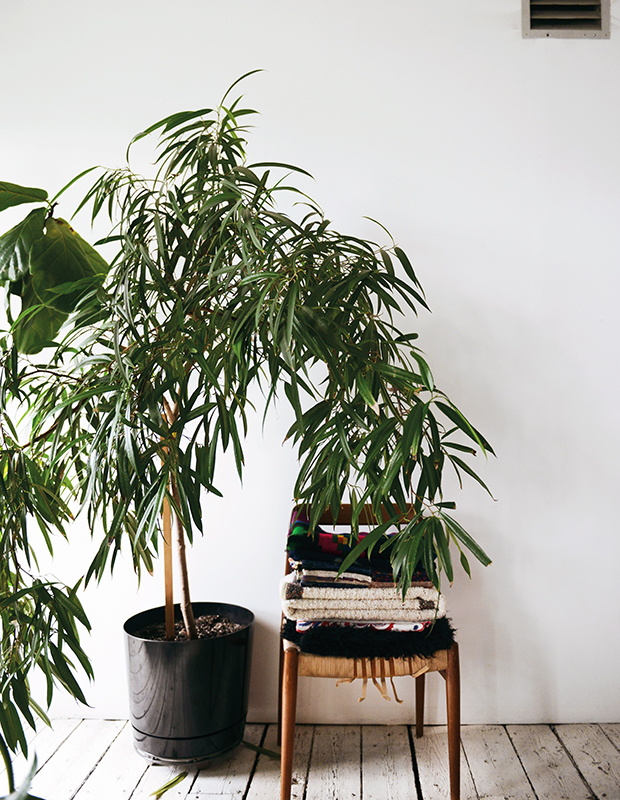
(Source)
For those looking for a grander, less finicky alternative to the Fiddle, look no further than the Ficus Alii. The trunk of this tree is typically braided, the leaves are long, and the tree can grow up to 10 feet indoors! In my experience this tree drops foliage periodically, even when it’s happy and growing.
Care Tips: The Ficus Alii prefers to be root-bound, and likes medium to bright light. It’ll grow more evenly if the plant is rotated routinely. Let the top 2 inches dry out between waterings.
2. Ficus Triangularus
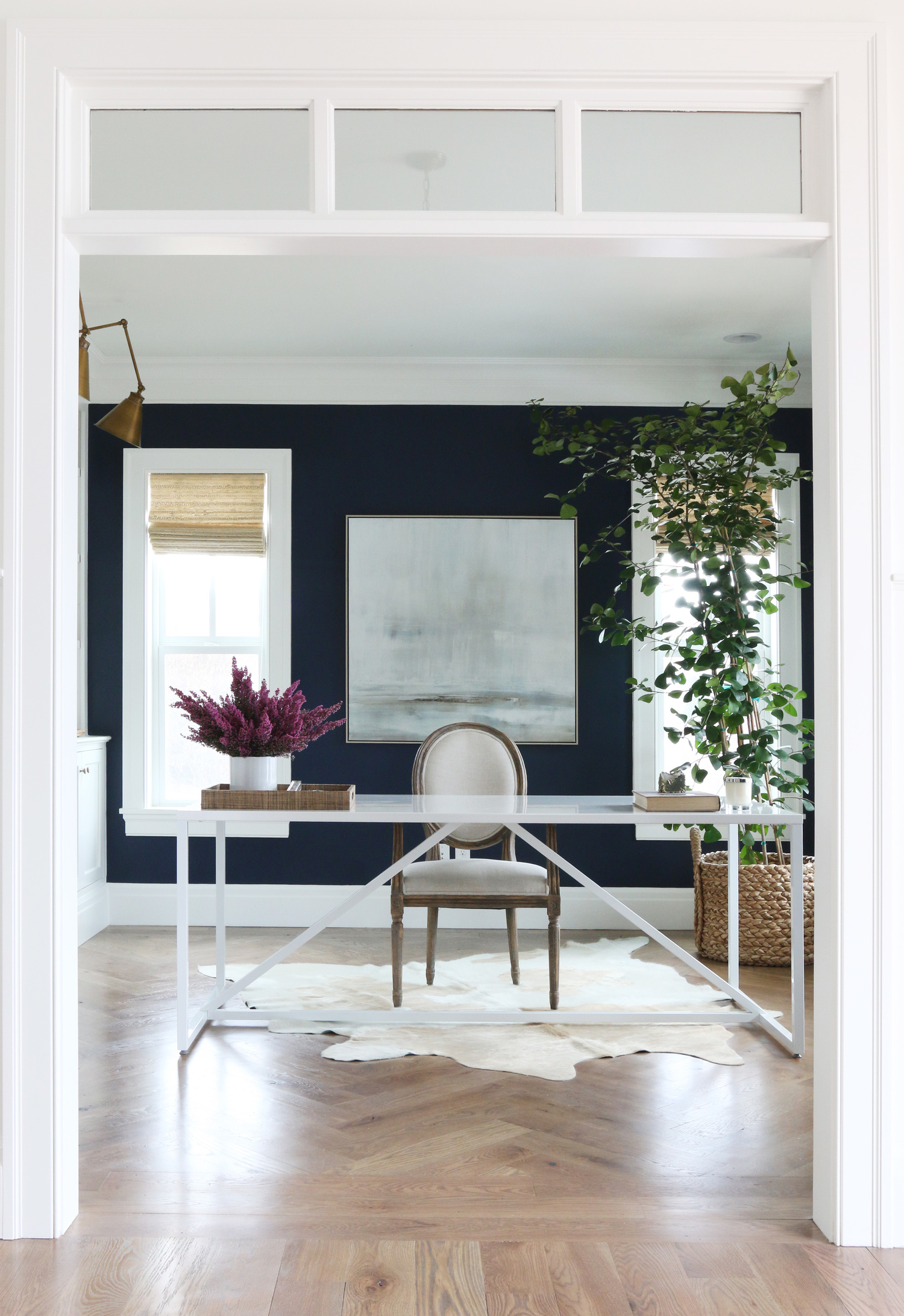 (Source: Studio McGee)
(Source: Studio McGee)
If you’ve mastered the art of the Fiddle Leaf Fig but are looking for something a little more sculptural, consider the Ficus Triangularus. Its leaves take the form of silver-dollar sized triangles, making for a design silhouette that’s easy on the eyes. Fair warning: like the fiddle, this green gal can be a bit of a drama queen.
Care Tips: Make sure your Triangle Ficus gets bright light, but avoid direct sun which will burn its delicate leaves. Water when the top 50% of the potting soil is dry. Allow the soil to dry out the same amount before watering again. Yellowing leaves may be a sign of a parched plant. If it drops green leaves or new growth turns black, likely it’s being overwatered.
3. Black Olive Tree

(Source: Amber Interiors)
The Black Olive Tree, also known as “Shady Lady,” can survive (and thrive!) indoors. They’re rare, so it might take some time scouring nurseries to find one, but the payoff is more than worth the hunt. I was today years old when I learned that they’re completely unrelated to the edible European olive trees we all know and love. This stunner is native to the Caribbean and Central America, and can grow to impressive heights in the right conditions.
Care Tips: The Black Olive can grow very tall indoors, and seems to do well with normal indoor humidity levels. The brighter the room, the better with this sun-loving beauty. We recommend soil that drains easily, and allowing the top inch of soil in the pot to try out in between waterings.
4. Dracena Marginata
 (Source)
(Source)
I have one of these beautiful gals in my bedroom and I love her! She’s got just a hint of Dr. Seuss whimsy, don’t you think? Dracaenas tend to be very forgiving plants, and most are pretty happy as long as you don’t neglect them entirely.
Care Tips: These tropical stunners can survive a much wider variety of light conditions than their ficus counterparts. But they will thrive in–you guessed it!–bright, indirect sun. Since they’re relatively drought tolerant, they’re at higher risk for over-watering. Watch for signs of yellowing leaves or brown tips and adjust your watering as necessary. We recommend a well-draining potting mix to keep its robust root system healthy.
5. Audrey Ficus
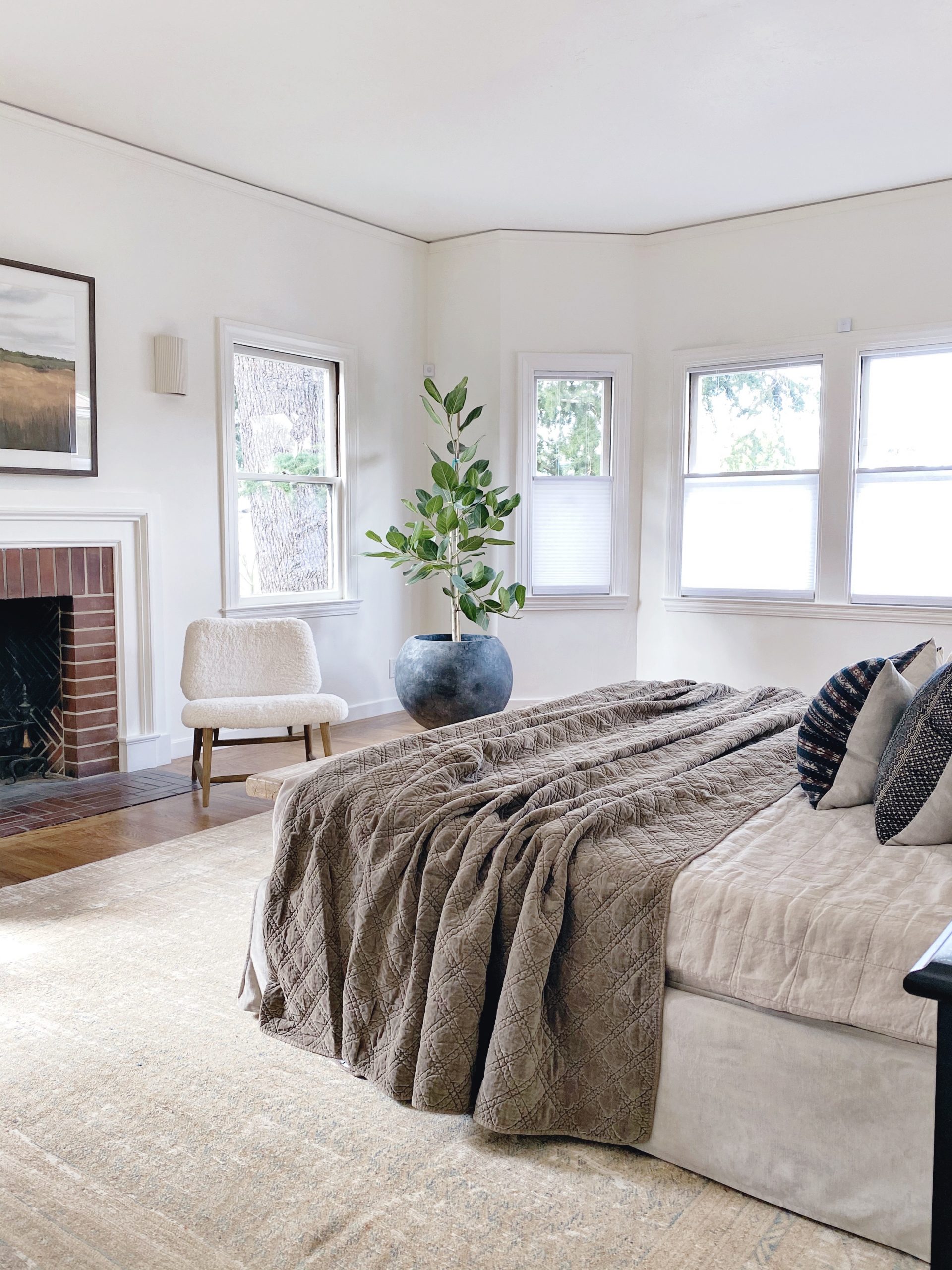
We used the Ficus Audrey in the master bedroom of our Manila Villa project and I was quite taken with its striking profile. This undemanding queen is like a Fiddle Leaf Fig on easy mode.
Care Tips: To thrive, the Ficus Audrey needs bright, indirect light. Allow the top 1-2″ of soil to dry between waterings and take care not to overwater to avoid root rot. Some consider this to be the ‘beginner’s ficus,” for good reason. Just make sure you’ve got some good light and a well-draining pot and you’re all set!
6. Ficus Longifolia
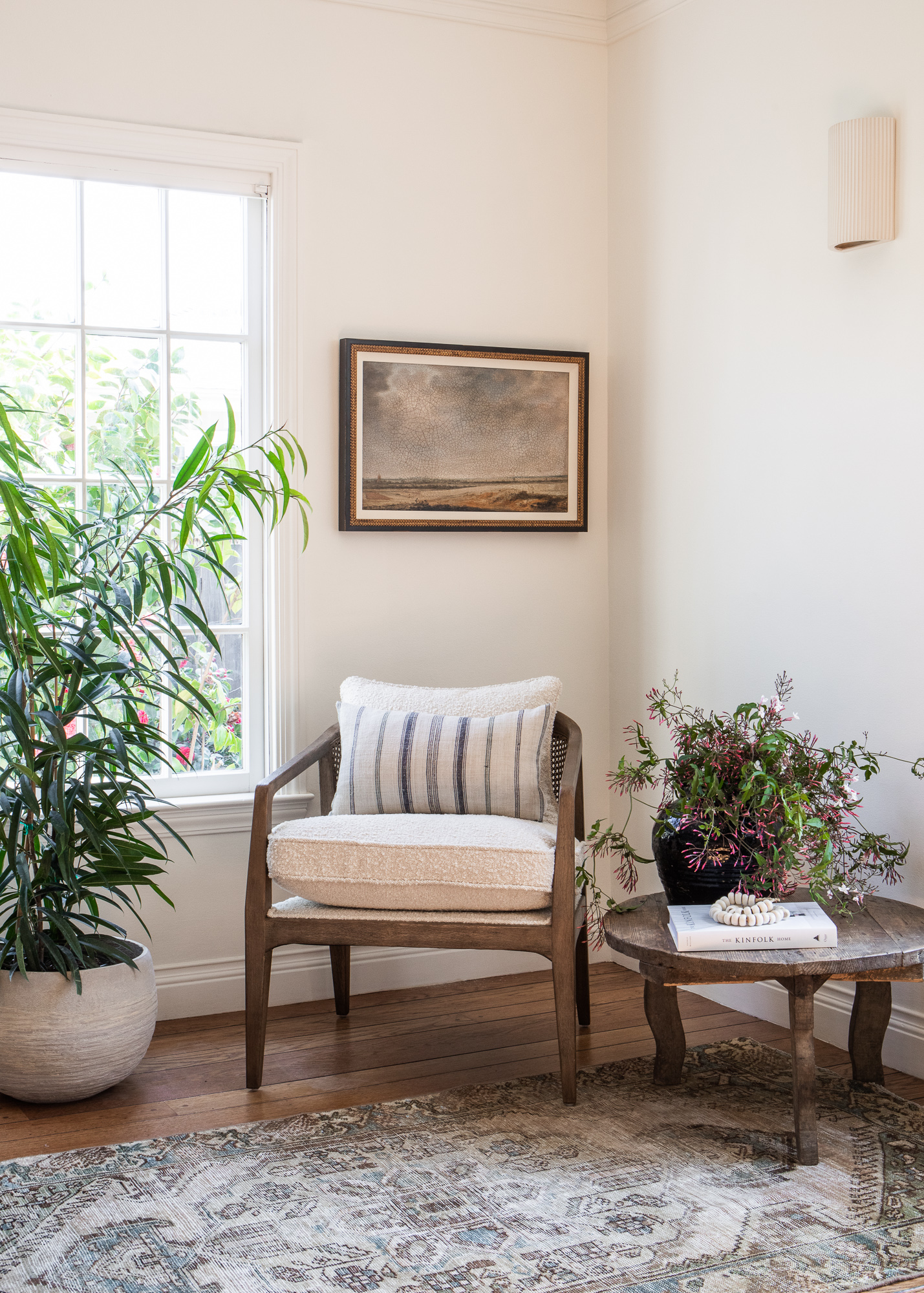
I’m seeing this cousin of the fiddle-leaf fig pop up in modern interiors lately and I’m a huge fan! It has elongated leaves and delicate branches, making it a perfect complement to that California eclectic flavor of design. We used it in the main living room of the Manila Villa project and I’m told it’s a fairly hardy indoor plant. Always good for someone who might forget a watering–or two.
Care Tips: These beauties love bright indirect light, but can tolerate lower light conditions. Only water when the top few inches of soil dry out completely. Good drainage is key.
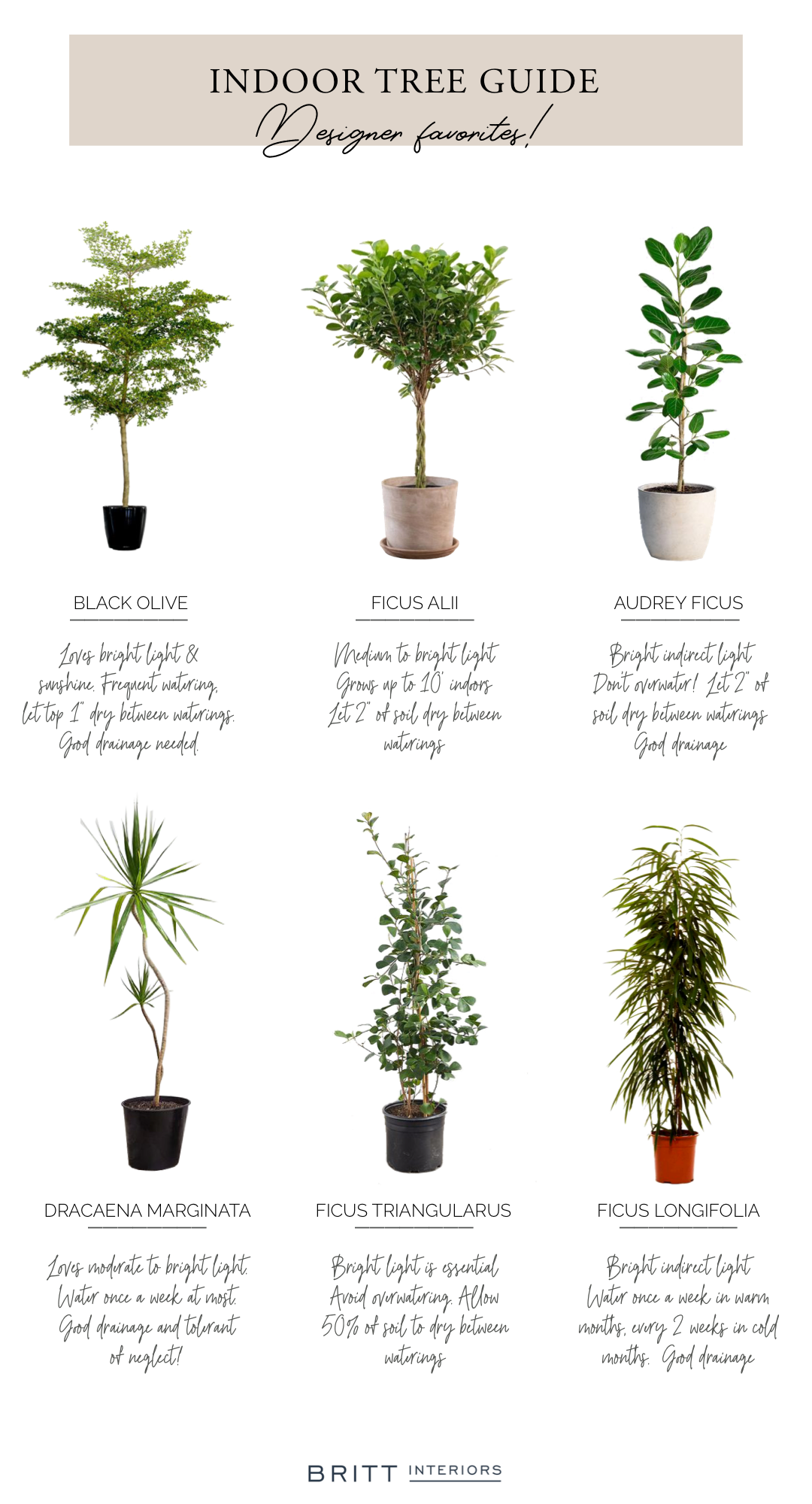
)
)

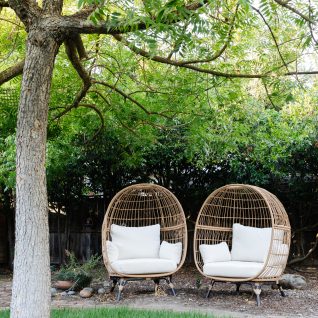

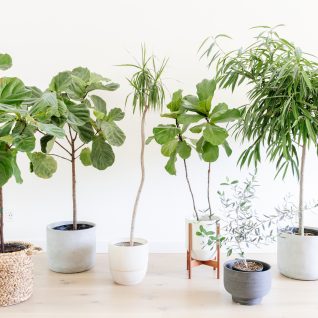

Could not love this post more! Unique content and super practical. I need something I can keep alive! 🤪
So glad you liked this post!!
Thank you for this post! Any online plant sources you like or do you typically stick with local nurseries.
I typically stick with local since I like to see what the tree looks like (shape wise) before purchasing. But Emily Henderson recently posted a big list of online resources!
Hi Brittany, I love this post! I’m in the bay area – have you seen the Shady Lady anywhere in our area? I have to have this tree!! lol :)
Hi! What kind of pots do you recommend? So many indoor trees have woven baskets but what’s actually inside? Right now I just have the plastic planter it came in. This is perfect since I just got a fiddle that I hope I can keep alive!! Thank you!
Great question! I also find it hard to find the perfect pot, most of the ones i end up liking are too small, and it’s true-baskets seem to be the right size! When I use a basket, I keep the plant in its black container and put a drip tray under neath inside the basket. I actually keep most of my trees in their black container and only take them out to put them into a bigger container when they need more space. To find great pots, I think CB2 and West Elm have great options, also sometimes Home Depot will have one that is just right. I recently bought two of these at my local Target and they are the perfect size. https://rstyle.me/+kbqoi4dm_WAFT5zlTgGaQQ
Hello! I was wondering where is the woven pot/basket with the leather handles from?
It is on the first photo and has the fiddle – leaf fig in it (next to a ladder).
I’m looking for the exact same basket.
Thank you so much!